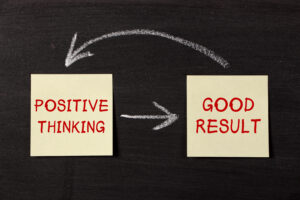Do you wear a lot of hats at your job? Have a lot of small details you worry about constantly? Start a lot of projects, but can’t seem to finish them?
Like the famous Jimi Hendrix said in a song, “There must be some way out of here.” Which is exactly what I thought when my eyes caught the book by David Allen, Getting Things Done. It changed my life and made me 10 times more productive. I also started following a great organizational system and its principles, todoist. I’ll share some of the high level concepts and then you can decide if you want to become a GTDer. I will also explain how I use the “frog” principle to prioritize during my day and maximize my productivity and energy.
The best way out, they, say, is through. So let’s get through this together. There are three resources that will cost a grand total of 12 bucks: the Todoist app, the Pocket app , and the book, Getting Things Done. But first, read this for 5 minutes.
Step 1: Stop what you are doing right now and write down all your mental loops
You know those thoughts that come up over and over again? “I need to do my timesheet.” “I have to schedule that call with so and so.” “When can I go for my annual physical?” “That article looked really relevant to my field, I will have to go back and get it later” “X emailed me again wanting that file, I have to send it to them” “I need to reorder paper towels, we’re running low”
GAH. Right?
These are the loops that you need to write down somewhere. In a moleskine notebook, on a big piece of paper, in an app (I have a preference for Todoist, but you can also use Microsoft’s to do app or the any.do app), just do an initial sweep of your mind and get the clutter out. You need to do that so you can focus on what’s in front of you – whether it be another person, a project, or just even stuff you are trying to do yourself. Has your mind ever wandered during a yoga class? This is inevitable if you don’t do an initial sweep of your loops.
Step 2: Choose your inbox for keeping track of ALL tasks, work, personal, family, etc. You need it all in one place.
And that place is NOT your email inbox. Do you always notice that super successful people seem to have zero inboxes and respond to emails right away? That’s because they understand that an email inbox is just for receiving messages and once they are acted on in some way they are no longer needed. Imagine that you did what you do to your email with snail mail. Now imagine that your home office or living room is stacked with papers up to the ceiling, representing emails and all those huge attachments. In that scenario someone would call “Hoarders” and report you. This scenario doesn’t make it any better just because it’s electronic.
That place is also not a “to do” list. How many to do lists do you start and don’t finish? Usually they are multiple and organized by area of life, like work, family, personal. It all belongs together, in one place. This sounds counterintuitive, but it is exactly what will keep your mind from scattering like a bunch of startled pigeons. That’s the perfect excuse to procrastinate and make those loops endless.
Under the GTD method, you have ONE GTD inbox. When a task arises, whether it is from an email, meeting, or just something that jumps in your head, write it down immediately. Note the due date (many of the apps allow you to enter a due date).
Here’s an example of what this would look like in the Todoist app (that and other resources are on the Todoist app). You can use this on your phone, which is convenient because you almost always have your phone to “dump” anything that comes up. You can also use this application t on your desktop. The Todoist app folllows GTD pretty well – you have an inbox and can organize by project. Assigning due dates to your tasks differentiates what you have to do today, versus tomorrow, versus later this week.
Here is an example of how the todoist app looks:


If there is a file associated with your task, add the link with the to do item. If it’s reading an article, add the link and also store the article in Pocket (an app where you can store articles to read later, either from your phone or computer).
If the task relates to an event, put it in your calendar ASAP. Don’t “remember to put it there later.” That’s the fastest way to end up triple booked and all stressed out over it. If this depends on someone else sending you an invite, either block (or get your assistant to block) until you get it. And if you work with the person enough, ask them nicely to send the invite ASAP. Hey, people ask me, so I am allowed to give this advice!
This completes the capture step.
Step 3: Prioritize
Now it’s time to turn these tasks into actionable items. That’s where lists fail most people. You just have a to do it but it lacks an execution step.This can be done by simplifying the taste into one of three categories – do, delegate, or defer. Here’s how that works:
- If you can do the task in 2 minutes or less, follow Nike’s advice and JUST DO IT. There is little benefit to putting off a quick response to an email that lingers in your inbox, quickly scheduling a call, retrieving a file, or scanning something to see if it’s even relevant.
- If you can delegate the task, delegate it. Delegation is one of the most misunderstood concepts in business. People take pride in doing the work “themselves” but failing to delegate tasks to free up your creativity and productivity actually undercuts the value you add to the organization. It also misses an opportunity to give someone else the chance to take more responsibility and grow in their career. If someone else can do it, and you have the authority to delegate it, then that’s what GTD recommends that you do.
- If the “task” is a huge project, and you are the project manager (which people like us often are), then have a separate document/paper/google sheet that outlines all the steps of the project, their due dates, who is responsible for what subtask. I like using a spreadsheet/google sheets for this purpose. Your inbox should have the next actionable item for the project. I like to also include the 3 or 4 immediate substeps in the inbox app to do a chunk of work at a time. Here’s how that would look on the app.
- If the task is not actionable, there are three possibilities you can act on to keep it from being an open loop:
- If you have already addressed it, or it’s no longer needed, TRASH it (not archive, not leave around, make it be gone).
- If you might need it at some point, you “incubate” it. This means you put it in a “someday/maybe” folder (most of the apps I recommend have this) and then you have a monthly “tickler” to evaluate whether to keep or trash it
- If it’s a reference, and you will likely need to refer back to it often, then file it – whether that means a folder in your email, a google drive folder, or your bookmarks. An organized bookmark system on your browser for files you need to access quickly saves a lot of time. In general, professionals like us get a lot that is for reference, so keeping an organized file system is critical. This is a whole other thing, but this article does a good job of giving you a starting point. One major tip that I use is to file a document as soon as I create it.
Here’s the Getting things done visual that you will find on many of the GTD sites (it is from the book). I find it helpful to print a copy and keep it close to where I do my work. After a while, this becomes automatic, but having the chart is a reminder to go to the workflow rather than let your mind get swept up in the waves of chaos. .

Daily productivity tips
GTD is the foundation of task and project management. But then there is the aspect of managing your day and carving out the time to do the projects/task/management/action items. This part of the post is my personal approach, which is a blend of al lot of expert mateiral.
Plan your week ahead of time
Every week, you should have a plan of attack. Every Friday afternoon, I plan my next week. The first thing I do is look at my calendar. If there are meetings that are optional to attend, I decide whether there is really a need for me to attend, or whether someone on my team can attend. We all know, especially while we are still in a mostly digital workplace, that people schedule a lot of duplicative and unnecessary meetings. Don’t let that waste precious time you could be using to clear your inbox and achieving your highest and best use for the company.
Get your frog time blocked out
Once I finish my calendar scan, I block out my “frog time”. Every day, we have at least 1-3 tasks that must get done, come hell or highwater. Mark Twain said it best:
If it’s your job to eat a frog, it’s best to do it first thing in the morning. And If it’s your job to eat two frogs, it’s best to eat the biggest one first.
Mark twain
Essential to this task is identifying your frog. What is the most important thing to get done TODAY? It can be something for work. It can be working out. It can be personal. The point is, you have identified and prioritized a THING or a set of THINGS. I hear people say, “Everything is a priority,” but that’s a copout. There is that ONE THING. Find it, frog it.
Failure to do that can lead to riding the wave of emails, calls, and rabbitholes and wondering at the end of the day what you actually did. We have all been there. But once you do your frog, you can reflect on the day and what you did accomplish.

When to do the frog
If the task is a work task that involves concentration and devoted time to complete, find a block of time that meets the following criteria:
- You are at your highest energy level. If you don’t know when that is, spend a few days feeling out your biorhythms. Are you a morning person? Do you get into an energy slump after lunch? Do you get a second wind after 5pm? Whatever that high energy buzz time is, harness it.
- There is the least likelihood of outside distractions. I work with people all over the world, but primarily I work with many people on East Coast time (where I am), some in Europe, and on the West Coast. So this can get complicated. Getting my frogs done early in the morning, between 6-9am, allows me to work mostly uninterrupted.
- You aren’t going to need to be in transit or having to eat a meal during that time. I actually use that early morning time to do my work, then go to the “office”, whether it is virtual or physical.

Once you are in your frog time, several things are really important:
- You won’t be checking your emails, except to retrieve a file or compose one you need to get out. It’s really tempting to get distracted by messages, so I compose mine in word first. If I have to go to my inbox to reference a particular email, I just search for the person’s name or subject and I don’t look at the other emails. If I have to blur my focus, I do it.
- Same for text messages, e-chat, and social media. Turning your phone off or on do not disturb makes this easier.
- You will accept that you only have a limited amount of time, so that’s not a reason to get bogged down in minutiae or go down rabbit holes.
What, do you ask, should you be doing during your non-peak times? I save that for the 3P tasks: perfunctory, passive, and perpetual:
Be strategic about your 3P tasks
So during dip times, that’s where I save my PPP tasks:
- Perfunctory – , organizing files, scheduling meetings, calling your dentist to make an appointment .
- Passive – reading articles, listening to podcasts, any intake of information that doesn’t require much ideation. This is an ideal time for regular team check-in calls.
- Perpetual – time and expense reports, cleaning email inbox (which involves deleting a lot of emails)
Getting things done is an art, but even just applying one of the steps like collecting items in your inbox will make you feel a lot calmer. Then when things start to spin and get hectic, you can go back to one resource, and have a plan of action.
When you start integrating these small but super habits you can get back so many hours you thought you never had.
More “GTD” resources:
https://todoist.com/productivity-methods/getting-things-done#introduction






